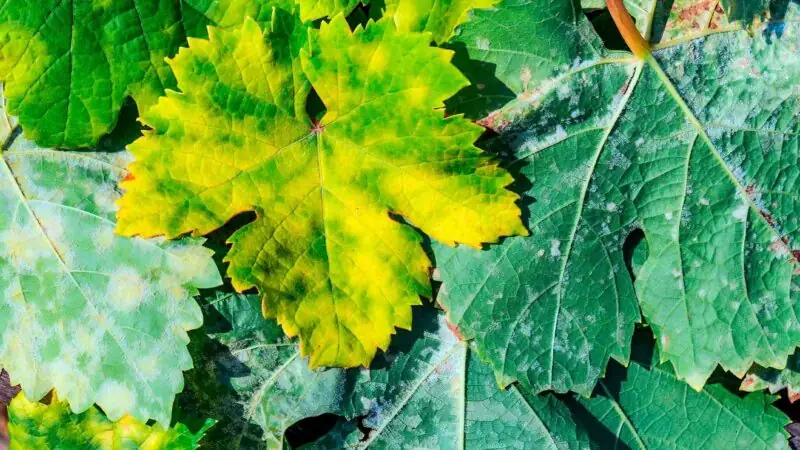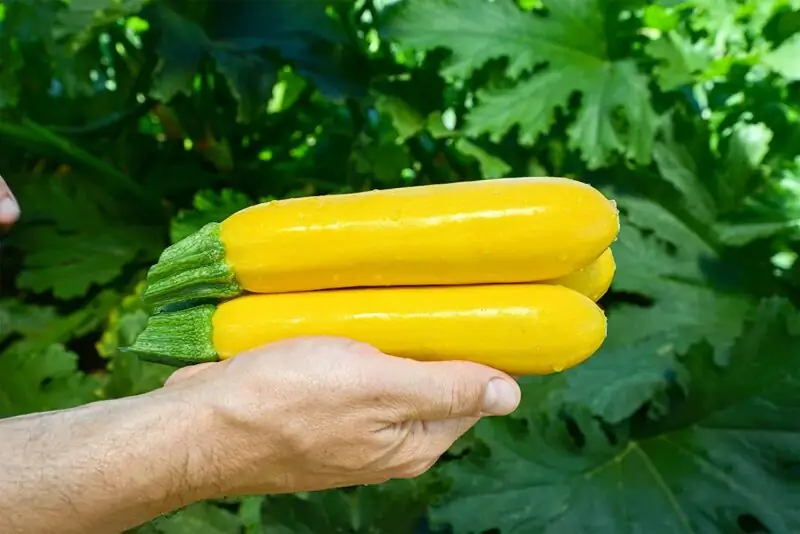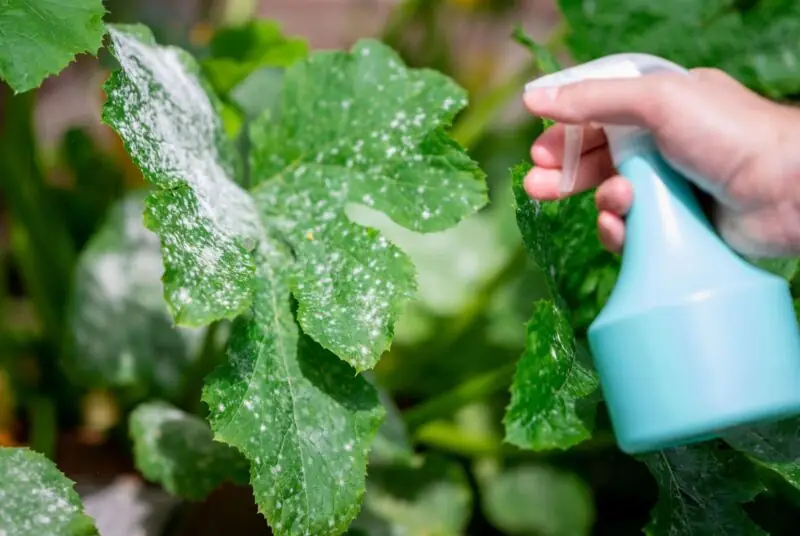Prevent Powdery Mildew On Squash Plants (Zucchini plant)

Well, howdy there, gardeners of all stripes! Have you ever strolled through your veggie patch, only to find your beautiful zucchini plants sporting what looks like a dusting of white or grayish powder? Yup, that’s powdery mildew on zucchini, a pesky fungal disease common among our leafy friends. It’s time to roll up our sleeves and learn more about this common plant nuisance.
Understanding Powdery Mildew
Powdery mildew is a type of fungal disease that’s like the uninvited guest at a garden party. It’s not fussy about where it crashes, affecting a wide range of plants, not just your precious zucchini. These mildew spores are sneaky, settling onto the leaves and stems of your plants, especially the underside of the leaves. It’s often seen as white to gray powdery spots, hence the name.
The Impact of Powdery Mildew on Zucchini Plants
Powdery mildew can be quite the troublemaker, and your zucchini plants may bear the brunt of its mischief. Infected leaves can develop white spots that grow and merge, making the leaves look like they’ve been dusted with flour. It can stunt your plant’s growth and harm your squash harvest. In short, powdery mildew is a fungal disease that is nothing but a party pooper!
The Zucchini Plant: Prone to Powdery Mildew
You see, zucchini, much like its cousins in the squash family, is particularly susceptible to powdery mildew. This fungus does not discriminate and will happily hitch a ride from plant to plant.
Growing Zucchini: Susceptible to Powdery Mildew
Growing zucchini is a joy, but it does come with its share of challenges, and powdery mildew tops that list. Remember, a healthy plant is less likely to develop powdery mildew, so keep an eye on your zucchini’s needs.
Identifying Powdery Mildew on Squash Leaves
A telltale sign of powdery mildew infection is when your squash leaves get covered in white powdery stuff. It starts as small white spots and spreads across the entire plant. The underside of leaves is often a hot spot for this fungal menace. So, please don’t be shy, flip those leaves and inspect them regularly!
The Fungus Among Us: Powdery Mildew in Detail
Now that we’ve met our fungal foe, let’s get down to the nitty-gritty.
Powdery Mildew: A Common Plant Disease
Powdery mildew is one of the most common plant diseases around, and it’s a master of disguise. It can look like an innocent dusting of powder, but it’s a bunch of fungal spores having a field day on your plants. It’s the party crasher of the plant world, and it can spread to other plants faster than gossip at a garden club meeting!
The Effects of Powdery Mildew on Squash Plants
Infected leaves struggle to photosynthesize effectively, which means your squash plant’s growth could be hampered. It can affect your squash harvest, too. Trust me, folks, this is one issue with zucchini you’d want to nip in the bud!
Prevention: How to Keep Powdery Mildew at Bay
As the saying goes, prevention is better than cure. So, let’s strategize to prevent powdery mildew on zucchini.
Strategies to Prevent Powdery Mildew On Squash
Good air circulation is a crucial factor to keep powdery mildew at bay. Always plant your zucchini plants far enough apart to ensure they have plenty of breathing room. Planting in full sun is also a good idea, as shady conditions can encourage spore germination. And remember, while it’s tempting to shower your plants with love and nutrients, over-fertilizing can stimulate tender new growth, which gets infected more easily.
Squash Varieties Resistant to Powdery Mildew

For those of you who’d instead outsmart this fungus by growing resistant varieties, you’re in luck! There are a bunch of them marked as “PMR” (Powdery Mildew Resistant), including some zucchini varieties like Payroll, Sebring, Dunja, Yellowfin, and Green Machine. Isn’t it nice when plant breeders have our back?
Treatment
Alright, folks. What do we do when prevention falls short and powdery mildew has made itself at home on our zucchini leaves?
How to Treat Powdery Mildew on Zucchini Leaves
First things first, remove infected leaves as soon as you spot that white powdery stuff. It may feel like you’re betraying your plant, but it’s for the greater good, I promise! Dispose of infected plant parts in the trash, not in your compost pile, to avoid spreading the disease. After dealing with infected plants, wash your hands and disinfect your tools with a 10% bleach solution to prevent spreading the spores to other plants.
Using Spray for Powdery Mildew: Effective Solutions

There are several organic sprays available to treat powdery mildew. Neem oil, an extract from the tropical neem tree, works wonders against mild to moderate powdery mildew infections. Spray both the upper and lower surfaces of the leaves, then repeat weekly until you see no more symptoms. But remember, only spray when temperatures are below 90°F to avoid burning your precious plants and avoid spraying when bees are active. After all, we love our pollinators, don’t we?
FAQs
Picture a leaf sprinkled with white or gray powder, almost like a dusting of sugar or flour. That’s what powdery mildew looks like on zucchini leaves. The underside of the leaves often shows the first signs, so don’t forget to check there!
Controlling powdery mildew involves a mix of prevention strategies and responsive treatments. Good air circulation, proper spacing, and resistant varieties are your best bet for prevention. If you spot the telltale white spots, remove infected leaves, disinfect your tools, and consider using an organic spray like neem oil.
Conclusion
Dealing with powdery mildew on zucchini might feel like running a marathon, but with the right knowledge and tools, you can stay ahead in the race. Remember, prevention is key, but even if the mildew sets in, there are still steps you can take to protect your plants and salvage your harvest. So, don’t let this common plant disease spoil your fun in the garden. Arm yourself with knowledge, roll up your sleeves, and show powdery mildew who’s boss in your garden! Happy gardening, folks!